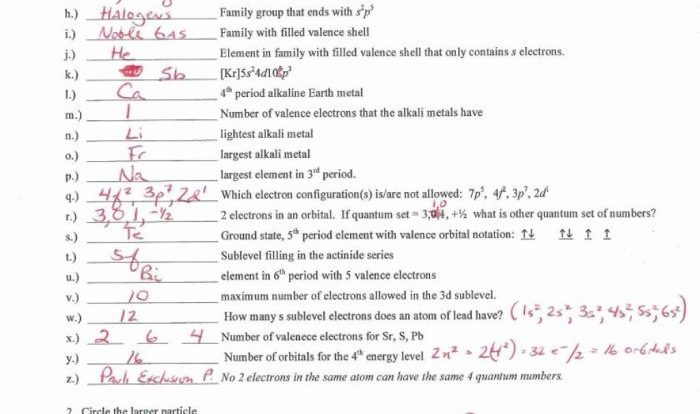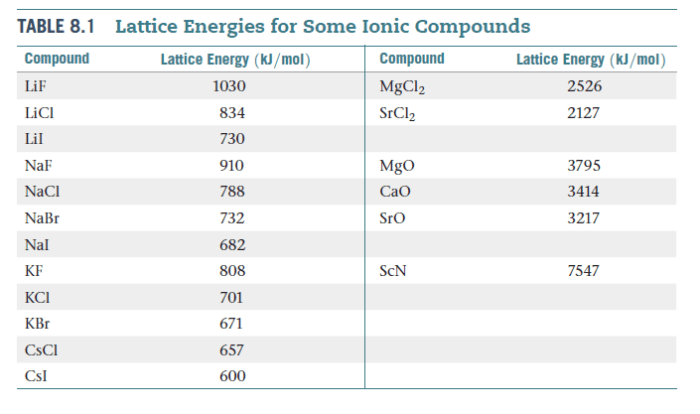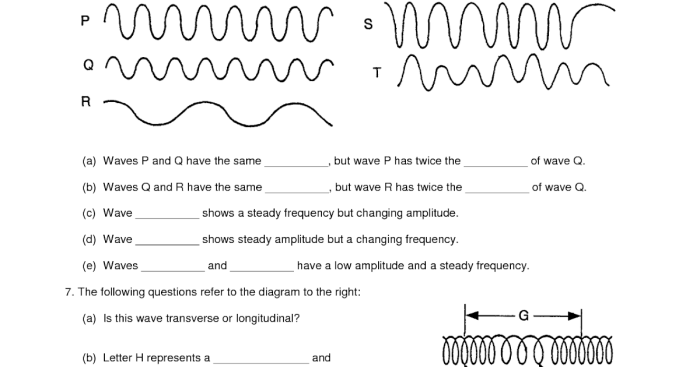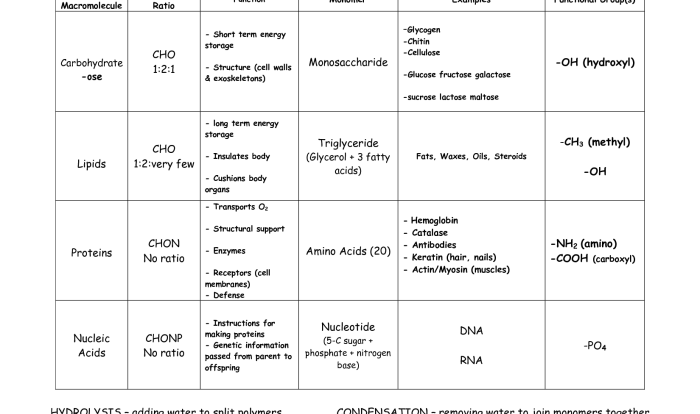Introducing the Matter Unit Study Guide 2 Answer Key, an indispensable tool for students seeking a comprehensive understanding of the fundamental principles of matter. This guide provides a structured and in-depth exploration of the properties, interactions, and transformations of matter, empowering learners to master this crucial scientific concept.
Throughout this study guide, students will embark on a journey through the states of matter, delve into the intricate relationship between matter and energy, and uncover the distinctions between physical and chemical changes. They will witness how matter interacts with its surroundings, forming chemical reactions that shape the world around us.
Unit Overview
Matter refers to anything that occupies space and has mass. It is made up of tiny particles called atoms, which combine to form molecules and compounds. Matter exists in three primary states: solid, liquid, and gas. Each state exhibits distinct characteristics due to the arrangement and movement of its particles.
Properties of Matter
Matter possesses several fundamental properties, including:
- Mass:The amount of matter an object contains.
- Volume:The amount of space an object occupies.
- Density:The ratio of mass to volume, indicating how tightly packed the particles are.
- Temperature:A measure of the average kinetic energy of the particles.
States of Matter
The three states of matter are distinguished by the arrangement and movement of their particles:
Solids
- Particles are tightly packed and arranged in a fixed pattern.
- Particles vibrate in place but do not move freely.
- Solids have a definite shape and volume.
Liquids
- Particles are closely packed but not arranged in a fixed pattern.
- Particles can move and slide past each other.
- Liquids have a definite volume but no definite shape.
Gases
- Particles are far apart and move randomly.
- Particles collide with each other and the walls of their container.
- Gases have no definite shape or volume.
Matter and Energy
Matter and energy are two fundamental concepts in science that are closely related. Matter is anything that has mass and takes up space, while energy is the ability to do work or cause change.
The relationship between matter and energy is described by the law of conservation of mass and energy. This law states that the total amount of mass and energy in an isolated system remains constant, regardless of the changes that occur within the system.
Law of Conservation of Mass
The law of conservation of mass states that the total amount of mass in an isolated system remains constant, regardless of the changes that occur within the system.
This law can be demonstrated by a variety of experiments, such as the combustion of a candle. When a candle burns, the wax and oxygen in the air react to form carbon dioxide and water vapor. The total mass of the products of combustion is the same as the total mass of the reactants, demonstrating the conservation of mass.
Physical and Chemical Changes
Matter can undergo two main types of changes: physical and chemical. Physical changes involve changes in the form or appearance of a substance without altering its chemical composition. Chemical changes, on the other hand, involve the rearrangement of atoms to form new substances with different chemical compositions.
Physical Changes, Matter unit study guide 2 answer key
Physical changes are typically reversible and do not involve the formation or breaking of chemical bonds. Some common examples of physical changes include:
- Melting: A solid turns into a liquid (e.g., ice melting into water).
- Freezing: A liquid turns into a solid (e.g., water freezing into ice).
- Evaporation: A liquid turns into a gas (e.g., water evaporating into water vapor).
- Condensation: A gas turns into a liquid (e.g., water vapor condensing into water droplets).
- Sublimation: A solid directly turns into a gas (e.g., dry ice subliming into carbon dioxide gas).
Chemical Changes
Chemical changes involve the breaking and formation of chemical bonds, resulting in the creation of new substances with different chemical compositions. Some common examples of chemical changes include:
- Combustion: A substance reacts with oxygen, releasing heat and light (e.g., burning wood).
- Oxidation: A substance reacts with oxygen, forming an oxide (e.g., iron rusting).
- Acid-base reactions: An acid and a base react to form a salt and water (e.g., hydrochloric acid and sodium hydroxide reacting to form sodium chloride and water).
- Precipitation reactions: Two solutions react to form an insoluble solid (e.g., silver nitrate and sodium chloride reacting to form silver chloride).
Matter Interactions
Matter interactions involve the ways in which different substances interact with each other. These interactions can result in physical or chemical changes, depending on the nature of the substances involved.
Chemical reactions are a specific type of matter interaction that involves the rearrangement of atoms and molecules to form new substances. Chemical reactions can be classified into various types, such as combination, decomposition, single displacement, double displacement, and combustion reactions.
Chemical Reactions
Chemical reactions involve the breaking and forming of chemical bonds between atoms, resulting in the formation of new substances with different properties.
- Reactants:The initial substances that undergo a chemical reaction.
- Products:The new substances formed as a result of a chemical reaction.
- Chemical Equation:A symbolic representation of a chemical reaction, showing the reactants, products, and the stoichiometric coefficients that balance the equation.
Chemical reactions are governed by certain principles, including the law of conservation of mass, which states that the total mass of the reactants in a chemical reaction is equal to the total mass of the products.
Elements, Compounds, and Mixtures
Matter can be classified into three categories based on its composition: elements, compounds, and mixtures.
An elementis a substance that cannot be broken down into simpler substances by chemical means. It consists of only one type of atom, which is the smallest unit of an element that retains its chemical properties. Examples of elements include hydrogen (H), oxygen (O), and gold (Au).
A compoundis a substance composed of two or more elements chemically combined in fixed proportions. The atoms in a compound are held together by chemical bonds, forming molecules or ions. Examples of compounds include water (H2O), carbon dioxide (CO2), and sodium chloride (NaCl).
A mixtureis a combination of two or more substances that are not chemically combined. The components of a mixture retain their individual properties and can be separated by physical means, such as filtration or distillation. Examples of mixtures include saltwater (a mixture of water and salt), air (a mixture of gases), and granite (a mixture of minerals).
Atomic Structure
The atom is the basic unit of matter. It consists of a nucleus surrounded by electrons. The nucleus contains protons and neutrons. Protons have a positive charge, while neutrons have no charge. Electrons have a negative charge.The
number of protons in an atom determines its atomic number. The atomic number identifies the element. For example, all atoms with one proton are hydrogen atoms. All atoms with two protons are helium atoms, and so on.The number of neutrons in an atom determines its isotope.
Isotopes are atoms of the same element that have different numbers of neutrons. For example, carbon-12 has six protons and six neutrons, while carbon-14 has six protons and eight neutrons.The electrons in an atom are arranged in shells around the nucleus.
The first shell can hold up to two electrons, the second shell can hold up to eight electrons, and so on.The outermost electrons in an atom are called valence electrons. Valence electrons are responsible for the chemical properties of an atom.
Role of Protons, Neutrons, and Electrons
Protons are responsible for the positive charge of the nucleus. They also determine the atomic number of an atom.Neutrons have no charge. They contribute to the mass of the nucleus.Electrons are responsible for the negative charge of the atom.
They are also responsible for the chemical properties of an atom.
7. Periodic Table
The periodic table is a tabular arrangement of chemical elements, organized on the basis of their atomic number, electron configuration, and recurring chemical properties. It is generally accepted that the modern periodic table was first published by Dmitri Mendeleev in 1869, although several other scientists had developed similar tables prior to this.
The periodic table is divided into 18 vertical columns, called groups, and 7 horizontal rows, called periods. The groups are numbered 1-18 from left to right, and the periods are numbered 1-7 from top to bottom. Elements in the same group have similar chemical properties, while elements in the same period have similar atomic structures.
Properties of Different Elements Based on Their Position on the Table
The position of an element on the periodic table can be used to predict many of its properties. For example, elements in the same group tend to have similar:
- Valence electrons
- Chemical reactivity
- Physical properties (such as melting point and boiling point)
For example, all of the alkali metals (Group 1) are highly reactive and have one valence electron. All of the noble gases (Group 18) are unreactive and have a full valence shell.
The periodic table is a powerful tool that can be used to understand the chemical properties of elements. It is also a valuable resource for predicting the properties of new elements that have not yet been discovered.
Chemical Bonding
Chemical bonding is the force that holds atoms together to form molecules and compounds. There are three main types of chemical bonds: covalent bonds, ionic bonds, and metallic bonds.
Covalent bondsare formed when two atoms share one or more pairs of electrons. The electrons are attracted to the nuclei of both atoms, which holds the atoms together. Covalent bonds are typically found in molecules that are made up of non-metals.
Ionic bondsare formed when one atom transfers one or more electrons to another atom. The atom that loses electrons becomes a positively charged ion, and the atom that gains electrons becomes a negatively charged ion. The oppositely charged ions are attracted to each other, which holds the atoms together.
Ionic bonds are typically found in compounds that are made up of a metal and a non-metal.
Metallic bondsare formed when the atoms in a metal share their valence electrons in a sea of electrons. The valence electrons are not attached to any particular atom, but they are free to move around the metal. Metallic bonds are typically found in metals.
Factors that Affect Bond Strength
The strength of a chemical bond is determined by a number of factors, including the following:
- The type of bond: Covalent bonds are typically stronger than ionic bonds, and ionic bonds are typically stronger than metallic bonds.
- The number of bonds: The more bonds that are formed between two atoms, the stronger the bond will be.
- The length of the bond: The shorter the bond, the stronger the bond will be.
- The electronegativity of the atoms: The more electronegative an atom, the more strongly it will attract electrons. This means that bonds between atoms with a large difference in electronegativity will be stronger than bonds between atoms with a small difference in electronegativity.
Stoichiometry
Stoichiometry is the branch of chemistry that involves the study of the quantitative relationships between reactants and products in chemical reactions. It is essential for understanding the behavior of chemical systems and predicting the outcome of reactions.
One of the most important aspects of stoichiometry is balancing chemical equations. A balanced chemical equation shows the exact number of atoms of each element on both sides of the equation, ensuring that the law of conservation of mass is obeyed.
Balancing equations involves adjusting the coefficients in front of each chemical formula until the number of atoms of each element is the same on both sides.
Balancing Chemical Equations
There are several methods for balancing chemical equations, including:
- Inspection Method:This method involves inspecting the equation and making adjustments to the coefficients until the equation is balanced. It is often used for simple equations with few reactants and products.
- Half-Reaction Method:This method involves separating the equation into two half-reactions, one for oxidation and one for reduction. The half-reactions are then balanced separately, and the coefficients are adjusted to ensure that the overall equation is balanced.
- Matrix Method:This method involves setting up a matrix with the coefficients of each element as variables. The matrix is then solved to find the values of the coefficients that balance the equation.
Balancing chemical equations is a fundamental skill in chemistry and is essential for understanding the stoichiometry of chemical reactions.
Chemical Reactions
Chemical reactions are processes that involve the rearrangement of atoms and molecules, resulting in the formation of new substances. They are crucial in various aspects of life, including metabolism, energy production, and industrial processes.
Types of Chemical Reactions
- Combination reactions: Two or more substances combine to form a single product.
- Decomposition reactions: A single substance breaks down into two or more simpler substances.
- Single-replacement reactions: An element replaces another element in a compound.
- Double-replacement reactions: Ions in two different compounds exchange places, forming two new compounds.
Factors Affecting Reaction Rates
- Concentration of reactants: Higher concentrations increase the likelihood of collisions and thus the reaction rate.
- Temperature: Higher temperatures provide more energy for collisions, increasing the reaction rate.
- Surface area of reactants: Larger surface areas increase the number of collision sites, speeding up reactions.
- Catalysts: Substances that increase the reaction rate without being consumed themselves.
Matter in Everyday Life
Matter forms the basis of our existence and finds applications in numerous industries. From construction to medicine, the properties of matter play a crucial role in shaping our daily lives.
Environmental Implications of Matter Use
The extraction, processing, and use of matter have significant environmental implications. Mining, for instance, can lead to deforestation, habitat destruction, and water pollution. Industrial processes often release pollutants into the air, water, and soil, contributing to environmental degradation. It is essential to consider the environmental impact of matter use and adopt sustainable practices to mitigate these negative consequences.
Applications of Matter in Various Industries
Construction:Matter forms the foundation of buildings, roads, and other infrastructure. Cement, concrete, and steel are essential materials used in construction, providing strength and durability to structures. Medicine:Matter plays a vital role in healthcare. Pharmaceuticals, medical devices, and diagnostic tools are all made of various forms of matter.
Advancements in materials science have led to the development of biocompatible materials used in implants and tissue engineering. Electronics:Matter is crucial in the electronics industry. Semiconductors, conductors, and insulators are used in the production of computers, smartphones, and other electronic devices.
The properties of matter determine the performance and efficiency of these devices. Transportation:Matter is the foundation of vehicles, aircraft, and ships. The use of lightweight materials in transportation has improved fuel efficiency and reduced emissions. Energy:Matter is central to energy production and storage.
Fossil fuels, nuclear fuel, and renewable energy sources like solar panels and wind turbines all involve the transformation or manipulation of matter to generate energy.
General Inquiries: Matter Unit Study Guide 2 Answer Key
What is the purpose of the Matter Unit Study Guide 2 Answer Key?
The Matter Unit Study Guide 2 Answer Key provides students with comprehensive solutions and explanations for the questions and exercises in the Matter Unit Study Guide 2, enhancing their understanding of the concepts covered in the unit.
How can I use the Matter Unit Study Guide 2 Answer Key effectively?
To maximize the benefits of the Matter Unit Study Guide 2 Answer Key, students should first attempt the questions and exercises in the study guide independently. Once they have completed their work, they can refer to the answer key to check their answers, identify areas where they need further clarification, and reinforce their understanding of the material.
What are the key benefits of using the Matter Unit Study Guide 2 Answer Key?
The Matter Unit Study Guide 2 Answer Key offers numerous benefits, including instant feedback on students’ work, reinforcement of key concepts, identification of areas for improvement, and enhanced confidence in their understanding of the subject matter.



